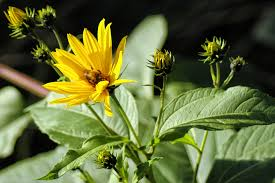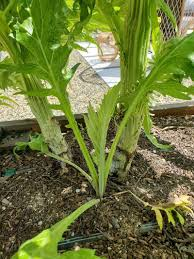Jerusalem artichokes, also known as sunchokes, are an often-overlooked yet highly rewarding crop to grow. These tubers offer a variety of benefits: they’re easy to cultivate, low-maintenance, nutritious, and available throughout winter. Despite their many advantages, there’s one downside, which we’ll address later.
What Are Jerusalem Artichokes?
The Jerusalem artichoke (Helianthus tuberosus) is a perennial sunflower native to North America. It produces knobby, white (or occasionally red) tubers that are edible both raw and cooked. These plants thrive in cooler climates but can also grow in warmer regions like Florida, though yields might be smaller.
While many Jerusalem artichokes are sold without a variety name, some named varieties are becoming more common. In the U.S., “French Mammoth White” is known for high yields, while “Fuseau” is favored in the UK for its smoother skin. Other varieties like “Golden Nugget” and “Dwarf Sunray” also offer unique benefits, including a more compact size and suitability for flower beds.

Planting Jerusalem Artichokes
These plants are adaptable and grow well in almost any soil, except waterlogged areas. Although they can tolerate poor soil, improving it before planting can lead to larger tubers. Jerusalem artichokes prefer slightly alkaline soil, so adding lime to raise the pH is recommended for acidic conditions.
The tall, sturdy stems can also serve as a natural windbreak or screen, though you’ll only need a few plants for your harvest. One tuber can yield up to 20 new plants. When planting, place tubers 4–6 inches deep and 12–18 inches apart. Ensure any sprouting shoots are positioned upwards. If you don’t have many tubers, you can cut them into pieces, making sure each piece has a bud.
Caring for Jerusalem Artichokes
These plants are low-maintenance and generally require minimal care. While regular watering and earthing up the stalks will boost growth, even with neglect, they will still thrive. Due to their tall stature (often over 10 feet), Jerusalem artichokes may need pruning to prevent them from overshadowing other crops. Cutting the stalks to about 4 feet in mid-summer helps prevent wind-rock and encourages better tuber growth instead of flowering.
While flowers provide late-season nourishment for pollinators, it’s best to secure them with stakes to prevent them from sprawling into other areas of the garden.

Harvesting Jerusalem Artichokes
Harvest Jerusalem artichokes after the first frost, when the plants start to die back. In warmer climates, waiting until mid-winter is ideal. Jerusalem artichokes store well in the ground, so you don’t need to harvest them all at once. If freezing is a concern, mulch well to extend the harvest period. For long-term storage, keep them in a cool, humid environment to prevent shriveling.
Replanting for the Next Season
If you’ve set up a permanent bed for your artichokes, it’s not necessary to dig them up every year. However, they may become crowded after a couple of years. In early spring, dig up the bed, remove any excess tubers, and replant the largest and smoothest ones. This ensures a healthier crop in future seasons. If you decide to stop growing them, covering the area with weed control fabric for a couple of years will help eliminate them.

Eating Jerusalem Artichokes
Jerusalem artichokes are rich in inulin, a carbohydrate that supports gut health. However, inulin can cause digestive issues, such as bloating or gas, making them a bit difficult to eat in large quantities. To mitigate this, it’s often recommended to eat them regularly, as the body may adjust over time.
These tubers make a delicious, low-calorie soup, and their subtle flavor pairs well with carrots, sweet potatoes, and peppers. Since they’re knobby and difficult to peel, it’s best to cook them with the skin on. Roasting or boiling them for around 20 minutes is an easy way to prepare them. If eaten raw, they can be grated into salads, but remember to sprinkle them with lemon juice or place them in acidulated water to prevent browning.
Jerusalem artichokes are a unique and nutritious addition to any garden. With their low-maintenance nature, diverse culinary uses, and ability to thrive in various conditions, they’re a great choice for both seasoned gardeners and beginners.
